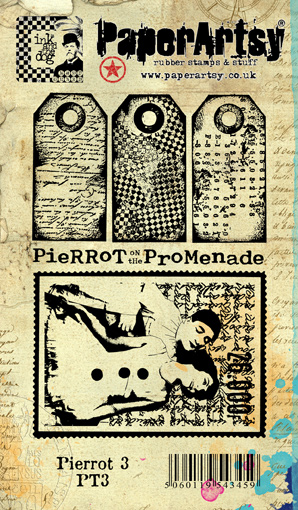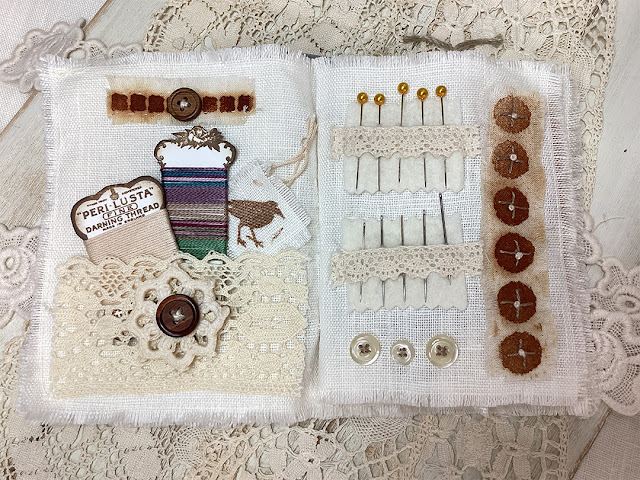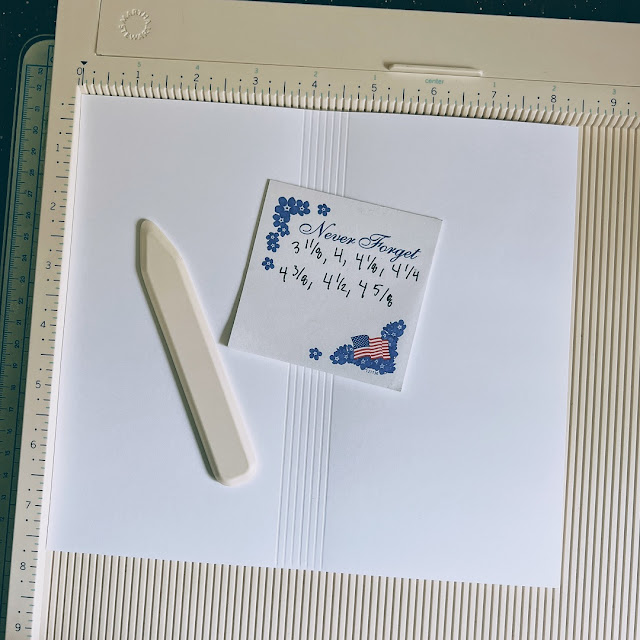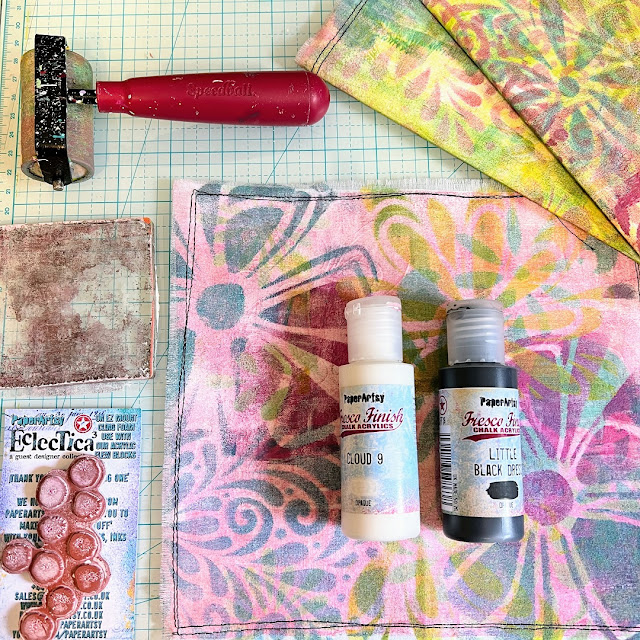
Hi everyone, it's Autumn Clark from SewPaperPaint with you today, and I'm here to share with you some fabric covered travelers notebooks I created from scratch using a selection of stencils designed by Tracy Scott. I love Tracy's fabulous stamps and stencils and thought it would be such fun to use them to design my own artsy material. I hope you will find this process interesting and will be inspired to print some fabric of your own! I thought long and hard and hard about this topic and how to represent it with Tracy's gorgeous designs, and though I could have used stencil brushes and painted the fabric directly, I knew that would take much more time and take some of the spontaneity out of the process. But if you don't have a gel printing plate, I would encourage you to try that method, because I'm sure the results would be amazing.
My first step, which I always love, was to choose a color palette with my PaperArtsy Fresco Finish Chalk Acrylics. This time I picked a range of brights, including Captain Peacock, Sargasso, Slimed, Banana, Prawn, Bougainvillea and Cloud Nine. I knew I wanted to work with some vivid, happy colors, and since they were I made them do a little dance for you! I hope these cheery colors alone will inspire your creativity!
I gathered some torn pieces of soft, pre-washed cotton fabric and my 8x10" gel printing plate. I wanted a layered look and picked quite a range of PaperArtsy stencils by Tracy Scott, including PS126, PS155, PS160, PS189, PS199 and PS322.






Now, this may seem like quite a lot of stencils, but as you will see in the video below (or HERE), I worked quickly and was able to get a lot of interesting color combinations and varied patterns throughout the process. I tried to speed it up a little, but not make you nauseous! Ha ha! The whole process took me about 35 minutes. My advice is not to overthink your layers and to work quickly and intuitively.
Now for a closer look at how those stencils altered the fabric...This piece showcases PaperArtsy stencil by Tracy Scott (PS210) as the focal image.
The next sample shows PaperArtsy stencil by Tracy Scott (PS125) among the layers.
Finally, the third piece shows PaperArtsy stencil by Tracy Scott (PS089) in that gorgeous Bougainvillea!

As you can see from the video, I added some base colors, then layered the stenciling. Next I assembled my covers I needed to construct a sturdy base so I cut a piece of cardstock to 8 1/2 x 7 3/4" and scored at 3 7/8, 4, 4 1/8, 4 1/4, 4 3/8, 4 1/2, 4 5/8".
I used a glue stick to adhere my fabric to the scored card (directly to the card, not the fabric). Then I used a pencil and a clear ruler to draw 1/4" border around the cardstock as a cutting guide. I would have used a rotary cutter, but I was out of sharp blades, so I used my fabric shears. Alternately, I could have folded a larger allowance before stitching for a more finished look along the edges, but I really wanted that artsy feel with the frayed edges.
Once my edges were trimmed, I took the pieces to the sewing machine and stitched a double border around the edges and frayed the edges thereafter.

At this point I folded my covers to see what the result would be and decided to add in a little contrast. I picked Tracy Scott mini stamp 64 (EM64) and used PaperArtsy Fresco Finish Chalk Acrylic in Cloud 9 (FF149) for my stamping. I considered using Little Black Dress, but was afraid to overpower my backgrounds. I brayered my paint onto my wee gel printing plate and used it as a "ink pad" for stamping.
To finish my journals, I used a pamphlet stitch with black waxed linen, but let the cords come out (rather than be hidden in the center). I used these threads to tie on a piece of sari ribbon to use as a wrap closure. I attached some painted wooden beads to the ends of the waxed linen.
I was really happy with the white stamping over the patterns. I like the softness, but as I said omitting the gel printing plate and stenciling directly to the fabric would produce richer colors. I always tend to tone colors down a bit, as a personal preference. And it was a really fun printing session using a new to me substrate.
The pink background is shows the stenciled colors a bit differently and I really like the effect. I only wish I had used Tangerine so that one of my journals had an orange background.
Now I will using my stamps to alter the pages within my journals! It's been fun to let stencils shine on the covers though!
It's not often that I use primarily stencils in my work, because I am a crazed stamper! Ha ha! But I hope this post has given you some ideas on how to maximize your stencil stash in a new way. There is an entire group of posts on the PaperArtsy blog dedicated to stencils, which you can find HERE.
Also make sure to scroll through the current topic, fabric, for many ways you can use your stenciled cloth, whether it be another book cover design, an artsy pillow for your studio, or a wall hanging. I wonder have you printed fabric before? We'd love to hear your thoughts in the comments. If not, I certainly hope you'll give it a try. What fun awaits! It's been such fun sharing with you today and I look forward to next time.
xx, Autumn

































































.png)

